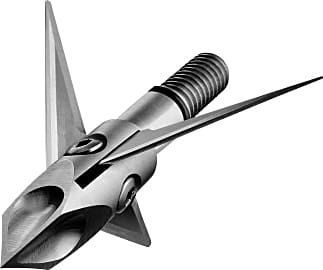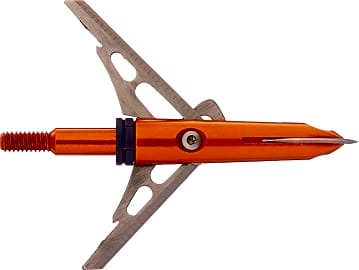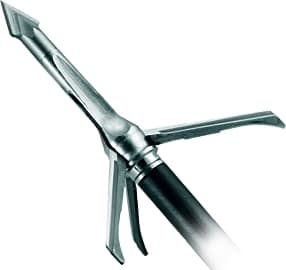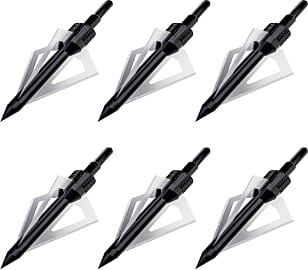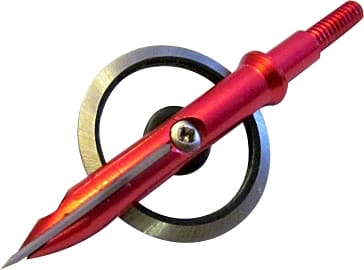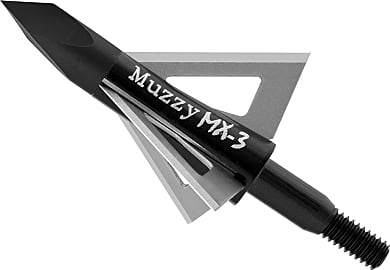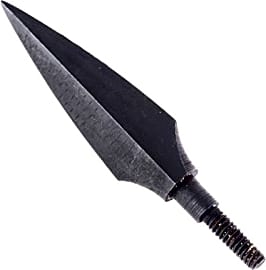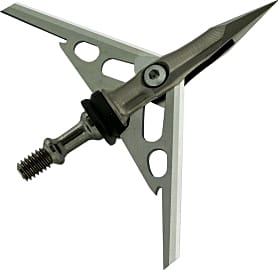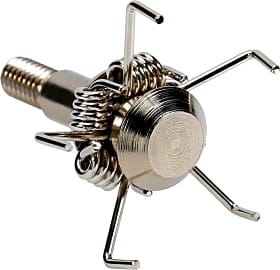The 10 Best Broadheads

This wiki has been updated 33 times since it was first published in February of 2017. You've perfected your archery form and aim, and have tuned your cross, compound, or recurve bow. When you know that field tips just won't cut it for the big game you're after, it's time to invest in some heavy-duty broadheads. From fixed blade to mechanical style models, these best-selling units will ensure that your target is effectively neutralized once your arrow hits its mark. When users buy our independently chosen editorial recommendations, we may earn commissions to help fund the Wiki.
Editor's Notes
October 27, 2020:
In this update, we removed the Swhacker 2-Blade Expandable owing to availability concerns. We also added the wildly popular Sinbadtek 100-Grain, a twelve-pack of points with triangular blades which offers great value for the price and is compatible with compound bows and crossbows alike, as well as shafts made of multiple different kinds of material.
June 29, 2019:
The right broadhead can make a real difference in your hunting experience. You want tips that will increase the chances of a pass-through shot and that create a large wound channel to make tracking easier. Most of them fly differently from field points you might be used to, so some of our selections include a practice tip. You can use it to hone your aim without dulling the tips you'll shoot when it really counts.
In this update, we evaluated broadheads for their effectiveness, durability, and value. Removed one item due to concerns about its availability. Added the Ramcat Hydroshock because its aerodynamic design means it flies like a field tip, which should help increase your accuracy.
Arrowheads: A Brief Introduction
Of all the ancient artifacts left behind by our early ancestors, few are as easily recognizable as the arrowhead.
Of all the ancient artifacts left behind by our early ancestors, few are as easily recognizable as the arrowhead. Triangular in shape, and usually made of stone, the iconic tool is a lasting symbol of human ingenuity, one of the earliest instances of the species shaping elements of its natural environment to fit its needs. Indeed, arrowheads are still found in abundance around the world, from archaeological sites and museums to gift shops and collectors' bins.
Of course, that ubiquity is a direct testament to the arrowhead's importance in the life of early homo sapiens. A subset of a wider category of artifacts that archaeologists refer to as projectile points, arrowheads were designed specifically to be attached to wooden shafts and shot from a bow. As such, they became a primary tool for hunting — and, later, a weapon in combat — allowing practitioners to take down prey in one or two shots and from considerable distances. Some of the earliest arrow-fitted projectile points date back 64,000 years to cave-dwellings in South Africa, though the technology eventually arose in cultures all across the globe.
Contrary to popular knowledge, arrowheads also came in a wide range of designs and materials intended to increase their effectiveness. While most artifacts that survive today are made of stone, chiseled into the classic triangular point through a process called knapping, other early models were cut from bone and wood and took different forms. Much later, as human technology advanced, the use of metal in the making of arrowheads led to an even greater proliferation of those forms, with each more lethal than the next. In ancient Greece, for example, bronze leaf-shaped and trefoil arrowheads were common, designed to maximize the cutting edge and inflict as much bleeding in the victim as possible.
The Modern Broadhead
Though arrowheads aren't quite as widely used today as they were in ancient times, the technology behind them has continued to develop. Modern arrowheads are highly sophisticated tools made of top-end materials and often resembling precise surgical instruments in form more than their ancient stone predecessors.
Many big game hunters prefer chisel-point heads, since they incorporate a solid tip that is able to bore through hide and hard bone without deflecting.
One of the most common types today is the broadhead. While the term may generally refer to any arrowhead wider than the shaft to which it is attached, it's come to apply specifically to the modern incarnation. Today's broadheads are usually constructed of high-grade carbon steel, and feature anywhere from two, three, or four distinct blades situated in such a way as to create a large, permanent wound channel in a target. They also boast other characteristics intended to increase their speed and accuracy, such as windchannels and synthetic materials.
Broadheads themselves fall into a few different subcategories. Fixed-blade broadheads, as the name suggests, have cutting edges that are secured to the center of the ferrule, making them among the most reliable kinds out there. Many big game hunters prefer chisel-point heads, since they incorporate a solid tip that is able to bore through hide and hard bone without deflecting. Smaller game hunters may opt for cut-on-point heads, which boast sharper, more lightweight blades that slice through flesh immediately upon impact. Some fixed-blade broadheads come in single piece variations, which increase the head's overall structural strength, while others offer replaceable blades, allowing you swap out damaged parts and increase the life of the tool.
Mechanical broadheads are also gaining in popularity among serious hunters looking for the most advanced gear on the market. Unlike standard fixed-blade models, these feature folded edges that are designed to deploy on impact, usually by kinetic force. The mechanical mechanism means they travel more like a field point when released from the bow, with a more streamlined flight path, but are still able to inflict maximum damage when they hit a target. Mechanical broaheads do, however, often lack the penetrating power of their fixed counterparts, as some of the arrow's kinetic energy is lost during blade deployment. On the other hand, they may also be more cost-effective in the long run, since they allow shooters to practice with inexpensive alternatives whose performance is similar to what they'll be using in the field.
The Father Of Modern Archery
As previously noted, the evolution of the broadhead came about in gradual fashion, with continuous refinements to the the basic two-edged, triangular design eventually giving way to more sophisticated types. Thus, it's hard to pinpoint an exact date for when the broadhead of today came on the scene or even who was behind it.
Thus, it's hard to pinpoint an exact date for when the broadhead of today came on the scene or even who was behind it.
But if anyone can be credited with inventing the modern broadhead, and indeed modern archery in general, it might be Fred Bear. An American author and traditionalist toxophilite, Bear is widely considered the father of modern bow hunting, having spent most of his life developing and marketing equipment to make the practice easier and more efficient. He patented one of the first bow gloves, founded an innovative hunting gear company, and created numerous videos and movies promoting archery for contemporary audiences.
Likely the most significant of Bear's products, however, was the Razorhead. Released in 1965, the dual-edged, screw-on arrowhead featured all the hallmarks of the modern broadhead, including large wind channels, a lightweight carbon steel body, and small bleeder blades meant to inflict as much hemorrhaging in a target as possible. The Razorhead was an immediate hit among the bow hunting community of the late 1960s and 70s, and still attracts a cult-following among archery enthusiasts today.


